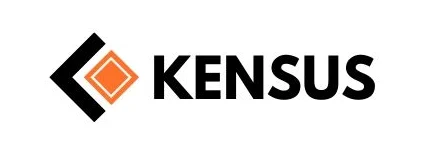1. Introduction: Comprehensive Life Cycle Cost Analysis in the Context of Rail Fleet Management
The Life Cycle Cost (LCC) of freight railcars includes all expenses associated with design, manufacture, operation, maintenance, upgrade, and final disposal. A key aspect of LCC analysis is the understanding that each of these stages generates specific, multidimensional costs that require the use of advanced calculation and forecasting methods, based on technical standards, dynamic operating conditions and variable regulatory requirements. A strategic approach to LCC is the foundation for optimising rail fleet management, while ensuring compliance with current legal and technical guidelines, including EN and UIC standards.
2. Analysis of freight wagon production costs
2.1. Structural design and baseline costs
The design process for freight wagons, especially RID hazardous goods tanks, requires the use of sophisticated CAD models and dynamic load simulations in accordance with EN 12663-2. Each design considers a multi- faceted endurance analysis under varying load forces, including lateral and vertical forces acting during operation on networks with high traffic intensity. Particular attention is paid to the interaction between wheelsets and track infrastructure, which requires optimisation of the structure through the use of high-strength components at critical structural points.
The design of tank cars compliant with EN 14025 includes welding technologies, where precise thermal control in the heat-affected zone is crucial to maintain the structural integrity of the tank under pressure. Quality control requirements, including penetrant testing (PT) and ultrasonic testing (UT), have a significant impact on design and manufacturing costs, with costs ranging from €250,000 to €400,000 per unit.
2.2. Production technology and material expenditure
The production process of freight wagons, especially tank cars, includes multi-stage technologies for forming, cutting, welding and assembling components, which must meet the EN 15085 standards for the quality of welded joints in load-bearing structures. The use of materials with increased corrosion resistance (e.g. EN 1.4404 austenitic steel) and tank anti-corrosion coating technology (e.g. FKM fluoroelastomers) is crucial to increase the service life of vessels operated in chemically aggressive environments.
For platform wagons, the steel-framed design with standard components (e.g. ISO Twistlock mounts according to ISO 1161) reduces material and production costs, which reduces the total cost of production to between 100,000 and 200,000 euros. The production of closed car bodies, equipped with climate control systems (ventilation, heating), includes additional technological steps related to thermal insulation and quality control of climate control systems, which increases the production cost to the level of EUR 150,000–300,000.
3. Service and maintenance models with dynamic traction loads
3.1. Preventive and corrective maintenance cycle
The costs associated with the operation of freight wagons are determined by the intensity of use, the type of goods transported and dynamic mechanical loads. As part of the preventive maintenance cycle, which is carried out in accordance with the EN 15313 standards for wheelsets and bearings, tank cars are subjected to periodic pressure inspections and leak checks for safety valves in accordance with RID. Annual servicing costs, including chemical cleaning of tanks and inspections of pressure installations, range from 5,000 to 8,000 euros per unit.
With their simpler design and fewer service components, flatcars generate lower operating costs. Key maintenance activities focus on regular checks of running gears and fastening systems (ISO 1161 twistlocks) as well as non-destructive testing of the wagon frame, resulting in annual costs of between €2,000 and €4,000.
3.2. Condition-Based Maintenance (CBM) technology
The implementation of advanced railcar condition monitoring (CBM) systems enables remote control of critical operating components. These systems are based on the use of vibration, pressure and temperature sensors that monitor the technical condition in real time. Integrating CBM with Fleet Management Systems (FMS) reduces corrective repair costs and optimizes service cycles, extending service intervals without compromising operational safety.
4. Wagon modernization costs: Adaptation to new technical and normative requirements
4.1. Adapting to evolving technical regulations
As the railcar fleet ages, modernization becomes a key part of life cycle management, especially in the context of new RID regulations and environmental requirements. The modernization of tank wagons includes the replacement of safety valves, venting systems and the installation of pressure and temperature monitoring systems in accordance with SIL2/SIL3 standards. The costs of such an upgrade can range from €10,000 to €20,000 per unit, depending on the complexity of the security systems.
4.2. Modernization of load-bearing systems and cargo securing systems
In platform wagons, upgrades include the adaptation of container lashing systems to changing transport requirements, including the installation of lashing systems in accordance with the new ISO standards. The upgrades also include the replacement of wheelsets with units with an increased load factor, which results from the tightening of the EN 15528 standards for maximum permissible axial loads. The costs of this type of modernization oscillate between EUR 5,000 and EUR 10,000 per unit.
5. Disposal phase: The complexity of the processes for dismantling and recycling specialty materials
5.1. Disposal of tank wagons
The disposal of freight wagons, especially tank cars, requires compliance with strict environmental regulations. The tanker dismantling process involves the removal and neutralization of chemical residues, followed by the recycling of alloy steel in accordance with the guidelines. The cost of disposal is between €5,000 and €10,000, including the removal of anti-corrosion coatings and chemical-resistant materials.
5.2. Disposal of platform and closed wagons
The disposal processes of platform wagons, due to the simplicity of their design, are less expensive. The disassembly of the steel frame and the recycling of structural steel is carried out with minimal technological effort, which reduces the disposal cost to the range of 3,000-5,000 euros per unit. Closed wagons, due to the presence of air conditioning systems and insulation elements, require a more complicated disassembly process, which increases disposal costs to EUR 4,000-8,000, depending on the materials and technologies used.
6. LCC optimization as a strategic fleet management tool
The total life cycle cost of a freight wagon can range from €200,000 to €1 million, depending on the type of wagon and its technical specifications. Tank cars are the most expensive units, due to the complexity of materials and advanced regulatory requirements, which raises costs to between €500,000 and €1,000,000 per unit. On the other hand, platform wagons, due to the simplicity of their design, generate the lowest costs, which oscillate between 200,000 and 500,000 euros.



